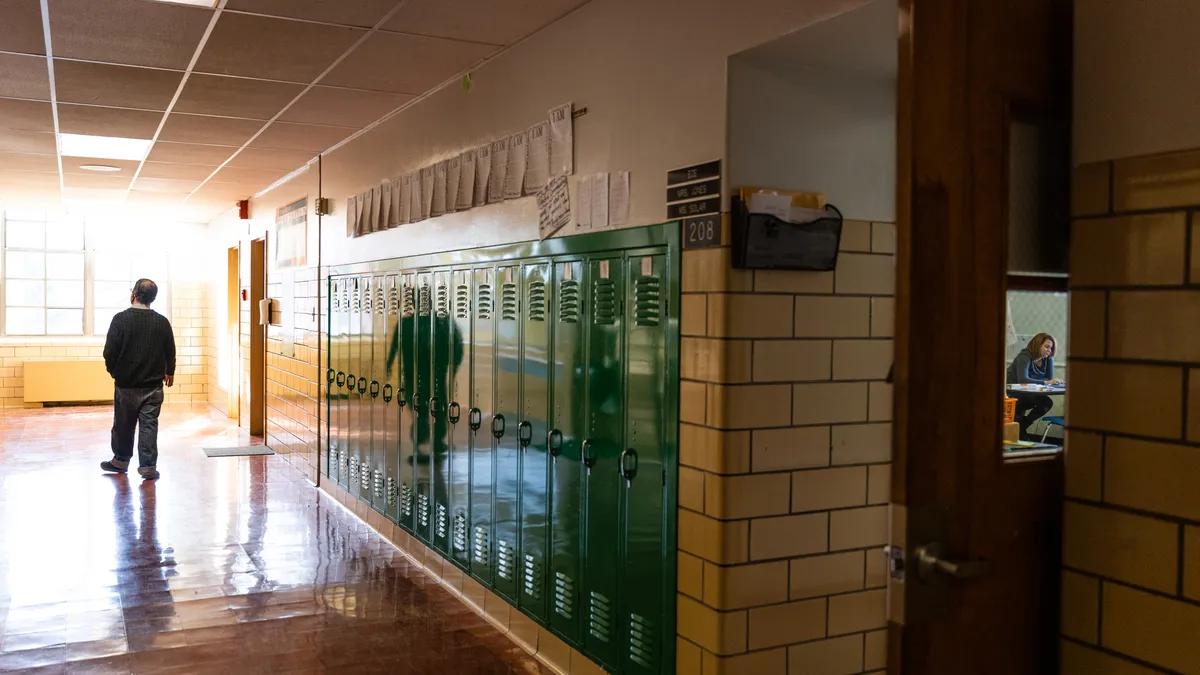Myrna Mandlawitz is a legislative consultant for the Council of Administrators of Special Education.
The Economic Policy Institute reports a projected shortfall of around 200,000 public school teachers by the 2025-26 school year without significant intervention. Add to that the fact that 340,000 fewer students enrolled in teacher preparation programs in 2018 than in 2010.
The Council of Administrators of Special Education is keenly aware of the shortage of qualified teachers, specialized instructional support personnel and administrators to fill vacancies in school districts across the country, with shortages particularly acute in special education. We hear daily from administrators citing the impossibility of finding qualified personnel to meet mandates of the federal law requiring specialized instruction and related services for children with disabilities.
No parent wants their child to be in a classroom with an under- or unqualified teacher or receive specialized services from someone who is filling in after a two-week crash course in that service. No administrator wants to have to tell a parent their child is not receiving the highest quality services and instruction possible. This situation does not have to exist in any school district.
Recent articles in reputable news sources, including Forbes and The Atlantic, have refuted reports of widespread educator shortages, positing the shortages in education are nothing new, predating the pandemic. In fact, some reports state parts of the country may actually have a surplus of educators, while others are experiencing a teacher
"exodus" rather than a shortage.
Did this problem begin with the pandemic? Certainly not, but the societal changes over the last three years have more than exacerbated an already serious problem.
In 2019, the Economic Policy Institute published on the growing teacher shortage, citing experts such as Linda Darling-Hammond, one of the foremost authorities on teacher education. The article concluded a number of factors affect educator shortages — working conditions, low pay and school and community environment, among others — and that the problem will only get worse if underlying causes are not addressed. The last three years have proven that statement true.
Call it what you will, there is a crisis requiring short-term and long-term fixes.
Policymakers at the local, state, and federal level need to engage immediately. Long-term, we must address the educator pipeline — attracting individuals to education professions, school districts teaming with higher education institutions, and supports and mentoring once new people enter the professions. We can start by making education professions attractive options for young people. Career exploration activities in elementary and middle school grades are a great place to begin, with greater emphasis and more in-depth activities at the high school level as students matriculate into college.
The U.S. Department of Education can play a role through an organized social media campaign featuring educators speaking about the great rewards of their professions. In other words, we need to focus on the pipeline.
What about the near term? The shortages are current and ongoing, so there is no time to waste. Colleges can provide college coursework on site in local school districts for paraprofessionals already working in those districts to provide them the chance to earn teaching credentials. Another avenue is respecialization where clinical social workers or occupational therapists working in medical settings are assisted to become credentialed for school practice.
Teacher residencies — patterned after the medical model — that pair teacher candidates with high-need districts and provide on-the-ground mentoring and supervision are yet another positive solution. Addressing compensation, better supports for teachers in the classroom, and giving educators more ownership in setting policies that affect their classrooms are also useful tools.
As an example, 80% of special education teachers in an Arkansas school district are former paraprofessionals. Teachers know they are supported, respected and valued by building and district leadership and actively recruit high-quality paraprofessional candidates, some with bachelor's degrees, to become special educators. Supported by the Arkansas Department of Education, paraprofessionals now are allowed to continue working during their teacher internship. The district has never had a special education teacher vacancy at the start of a school year, even with five new special education teaching positions in the past three years.
The Bureau of Labor Statistics projected the need for 37,600 new special education teachers between 2020 and 2030 to keep up with demand. Right now special education administrators are turning to long-term substitutes, some totally untrained to meet the needs of student with disabilities, and other short-term fixes to ensure a teacher in every classroom. Further contributing to the problem is a dearth of special education faculty in higher education.
Policymakers at the local, state and federal level must act now to attract, train, and retain special and general educators to ensure sufficient numbers of highly qualified teachers, specialized instructional support personnel, and administrators. Only with immediate attention will we be able to ensure every child in America is prepared for a bright and promising future.












